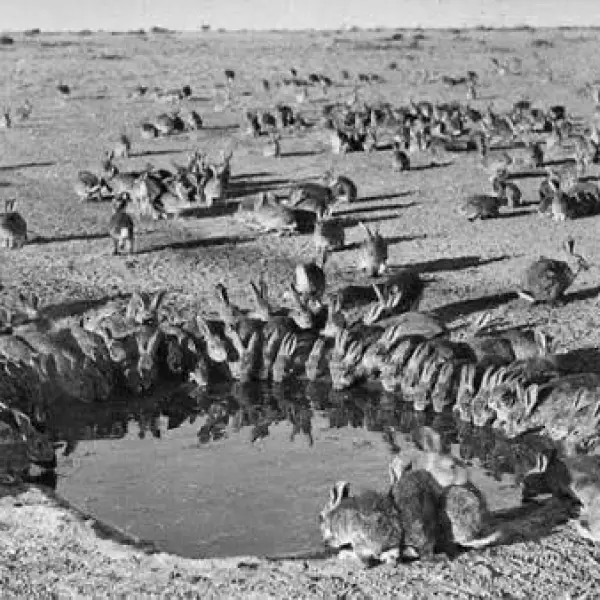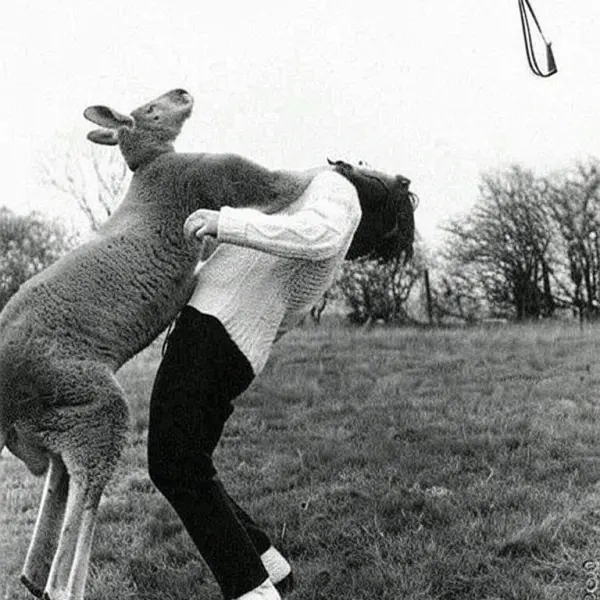Aboriginal People Considered Animals
In Australia, until the 1960s, the Flora and Fauna Act considered Aboriginal people to be animals rather than humans.
Debunking the "Flora and Fauna Act" Myth: A Tale of Misinformation and Historical Truth
In Australia, a persistent urban legend claims that until the 1960s, Aboriginal people were classified as animals under a so-called "Flora and Fauna Act." It’s a shocking story, often tied to the landmark 1967 referendum, and it’s been repeated by politicians, actors, and social media posts alike. But here’s the catch: no such law ever existed.
The myth likely began as a metaphor, capturing the harsh reality of how Indigenous Australians were treated. Historian Marcia Langton recalls filmmaker Lester Bostock in the 1970s saying, “We were treated as animals,” a sentiment that resonated deeply. Over time, this evolved into a literal claim, amplified by figures like Linda Burney and posts on X. Some pointed to the 1967 referendum, which allowed the federal government to make laws for Aboriginal people and include them in the census, as the moment they were “freed” from this supposed act. But the truth is more complex.
No Australian legislation ever labeled Aboriginal people as fauna. However, the myth has roots in real injustices. Until the mid-20th century, Indigenous Australians faced discriminatory policies—denied voting rights, restricted movement, and subjected to practices like the Stolen Generations. In some states, Aboriginal affairs were managed alongside wildlife departments, which may have fueled confusion. A 1929 royal commission report even discussed “Aborigines, Fauna and Flora” in one chapter, but it never equated people with plants or animals.
The 1967 referendum didn’t grant citizenship (that came in 1948) or voting rights (secured by 1965). It was a symbolic victory, reflecting public support for Indigenous equality, which made it fertile ground for the myth to grow. As historian Russell McGregor puts it, the story “embodies a deeper truth” about discrimination, making it emotionally compelling.
So why does the myth persist? It’s a simple, powerful way to convey centuries of mistreatment. But it also risks oversimplifying history, overshadowing the real fight for Indigenous rights today. The next time you hear about the “Flora and Fauna Act,” remember: it’s a metaphor, not a law, rooted in a painful but important truth.
Debunking the "Flora and Fauna Act" Myth: A Tale of Misinformation and Historical Truth
In Australia, a persistent urban legend claims that until the 1960s, Aboriginal people were classified as animals under a so-called "Flora and Fauna Act." It’s a shocking story, often tied to the landmark 1967 referendum, and it’s been repeated by politicians, actors, and social media posts alike. But here’s the catch: no such law ever existed.
The myth likely began as a metaphor, capturing the harsh reality of how Indigenous Australians were treated. Historian Marcia Langton recalls filmmaker Lester Bostock in the 1970s saying, “We were treated as animals,” a sentiment that resonated deeply. Over time, this evolved into a literal claim, amplified by figures like Linda Burney and posts on X. Some pointed to the 1967 referendum, which allowed the federal government to make laws for Aboriginal people and include them in the census, as the moment they were “freed” from this supposed act. But the truth is more complex.
No Australian legislation ever labeled Aboriginal people as fauna. However, the myth has roots in real injustices. Until the mid-20th century, Indigenous Australians faced discriminatory policies—denied voting rights, restricted movement, and subjected to practices like the Stolen Generations. In some states, Aboriginal affairs were managed alongside wildlife departments, which may have fueled confusion. A 1929 royal commission report even discussed “Aborigines, Fauna and Flora” in one chapter, but it never equated people with plants or animals.
The 1967 referendum didn’t grant citizenship (that came in 1948) or voting rights (secured by 1965). It was a symbolic victory, reflecting public support for Indigenous equality, which made it fertile ground for the myth to grow. As historian Russell McGregor puts it, the story “embodies a deeper truth” about discrimination, making it emotionally compelling.
So why does the myth persist? It’s a simple, powerful way to convey centuries of mistreatment. But it also risks oversimplifying history, overshadowing the real fight for Indigenous rights today. The next time you hear about the “Flora and Fauna Act,” remember: it’s a metaphor, not a law, rooted in a painful but important truth.
Envíado por OldPik el 6 de enero de 2025
Image

Debes iniciar sesión para comentar las fotos.
Iniciar sesión
Iniciar sesión














Sin comentarios aún, sé el primero en comentar...